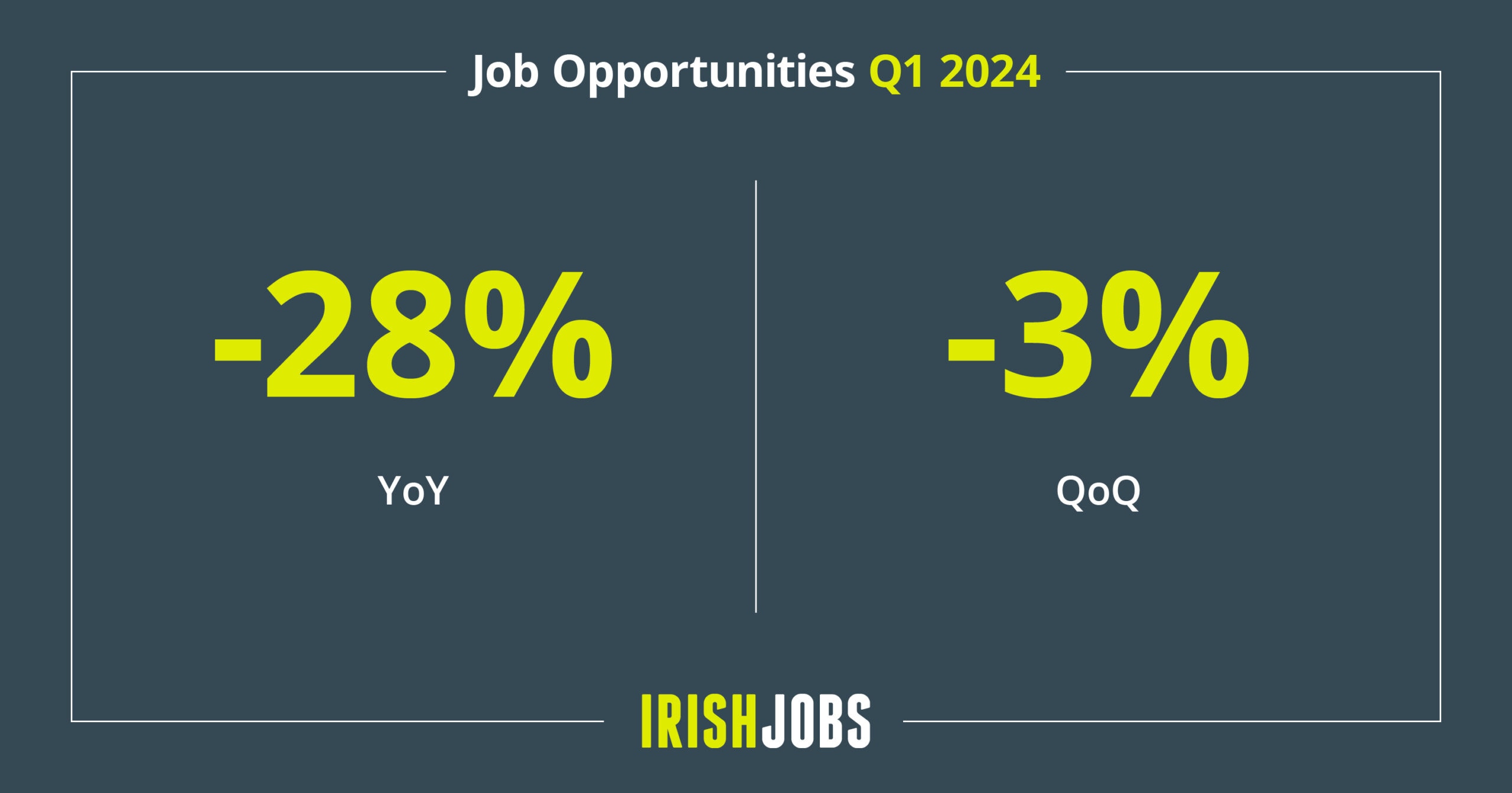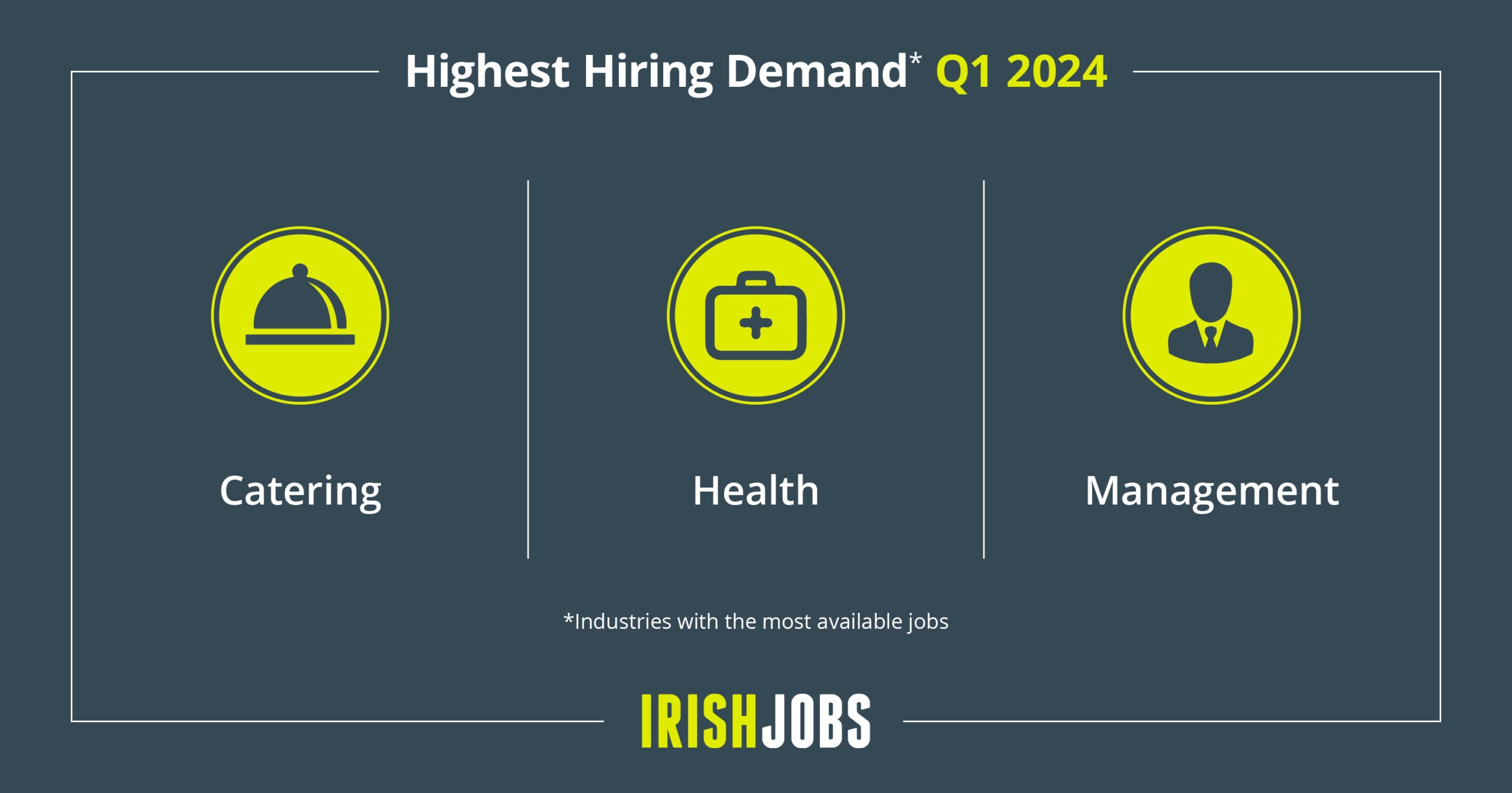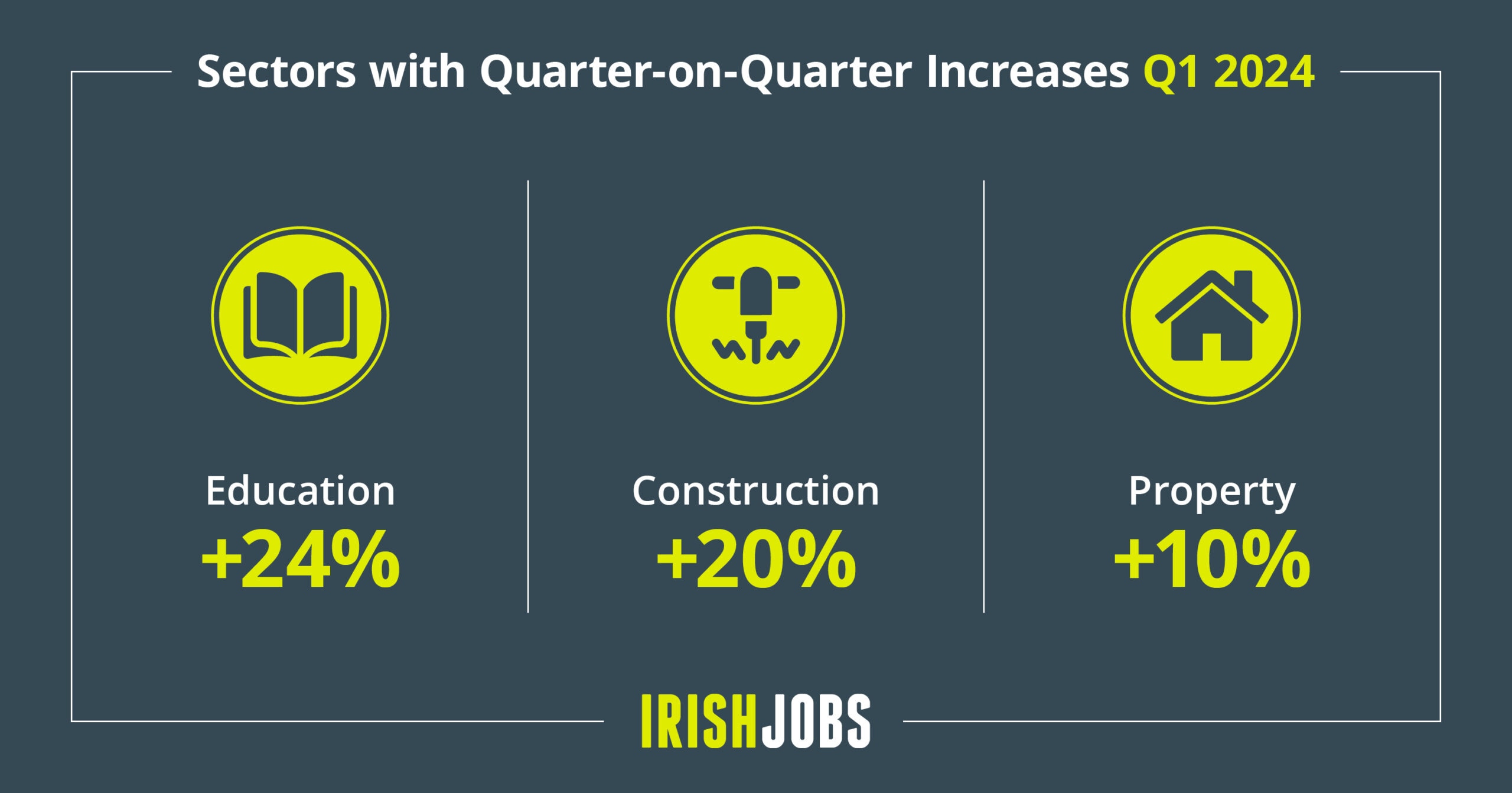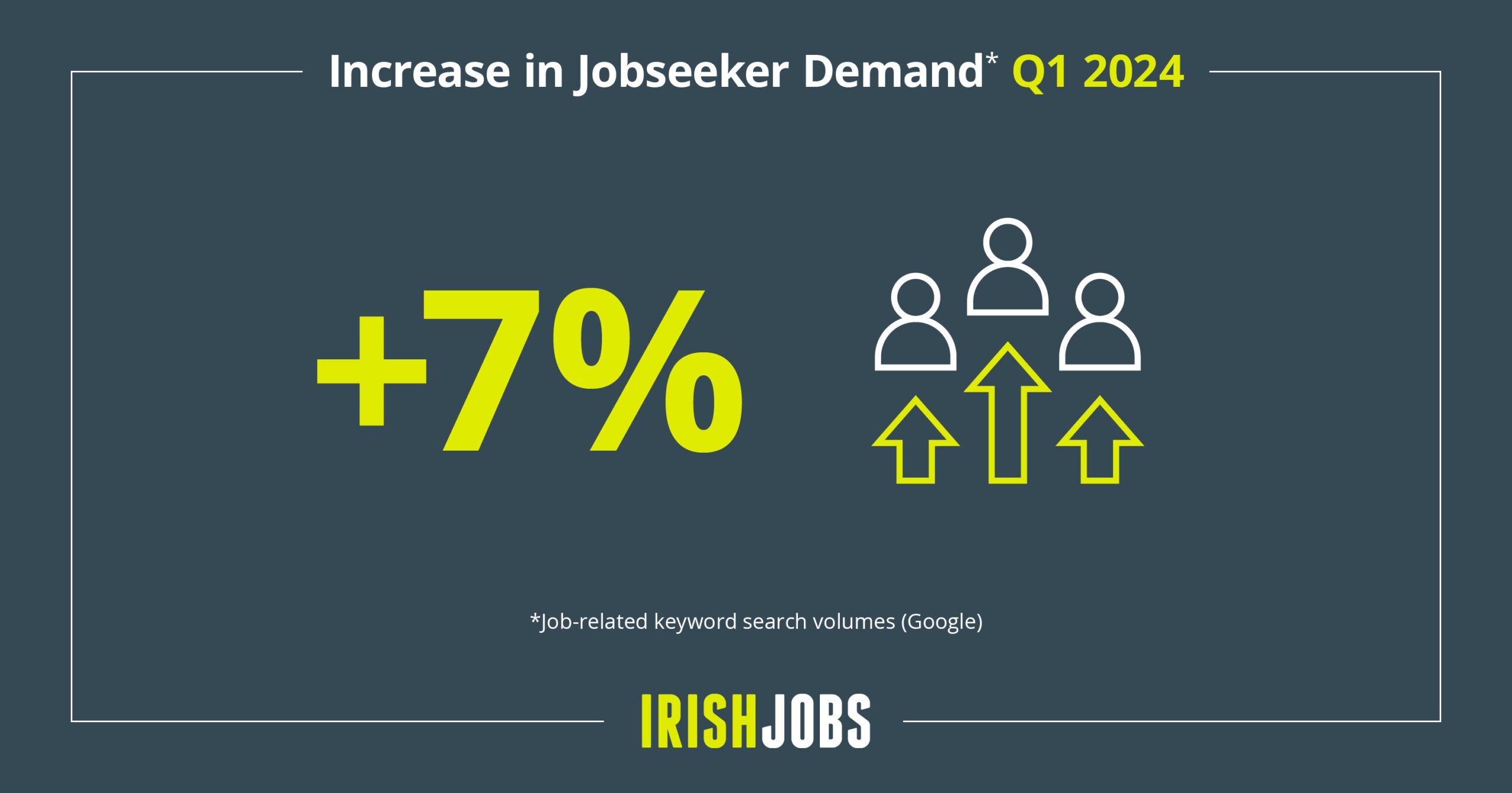The latest Jobs Index from IrishJobs shows signs that the job market is beginning to settle following the hiring surge of recent years.
Job vacancies decreased by 3% quarter on quarter in Q1 2024, the lowest fall for six successive quarters. This likely indicates a steadier rate of vacancy generation over 2024. Following a hiring surge in recent years, the job market continues to stabilise on an annual basis, with a 28% decline in job vacancies year-on-year (Y-o-Y) recorded in Q1.

Sectoral Trends
A number of sectors recorded increases in Q-o-Q levels of vacancies in Q1. The Education sector (24%) recorded the highest level of Q-o-Q vacancies. Construction (20%), Social Care (11%), Engineering (11%), Property (10%), Manufacturing (8%), Science (6%), and Accountancy (3%) were among the sectors that accounted for Q-o-Q increases in vacancies.

Construction & Property Sectors
The Q1 Jobs Index reveals an increase in Q-o-Q vacancies (20%) in the construction sector. The high level of demand for skilled professionals in the sector continues to grow as the Irish economy seeks to meet its ambitious housing targets. Data on the most frequently posted job openings by employers revealed that Quantity Surveyors were the most in-demand role in the sector over the quarter.
The property sector also registered strong Q-o-Q vacancy growth (10%), aligned with high levels of demand in the residential property market. Facilities Coordinators, Facilities Managers, and Facilities Engineers were among the most sought-after roles in the sector, indicating resilient growth for property management roles despite a slowdown in the commercial market.

Education Sector
The Education sector experienced the highest sectoral increase (24%) in Q-o-Q vacancies. The increase is driven by hiring demand across third-level institutions, including UCD, Munster Technological University, and South East Technological University, for a range of roles, including Assistant Professors and Assistant Lecturers. The ongoing recruitment needs of the Childcare sector are also reflected in the increase in Education roles, with positions for Early Years Educators and Childcare Practitioners increasing in the first three months of the year.
IT Sector
While the Q1 Jobs Index reveals that vacancies across the IT sector are down by 8% Q-o-Q, the sector itself remains one of the largest employers in the market, accounting for 5.5% of all new jobs advertised in the quarter. The sector seems to have largely rebalanced following a period of extreme growth during the pandemic, with this quarter’s decline the lowest quarter-on-quarter index fall for the IT sector since Q4 2022.
Jobseeker Activity
IrishJobs data reveals that jobseeker activity, a measure of demand for new roles in the jobs market based on job-related keyword searches online, remains strong, increasing by 7% in the first three months of the year compared to the same period last year. This strong activity may provide an opportunity for employers to better meet their talent needs over the coming months as hiring levels soften and more candidates seek new roles.

Remote Working
In a continued downward trend over the previous two quarters, remote/working-from-home vacancies fell by 10% in the first three months of the year. The rate of decline was substantially faster than that of overall vacancies, indicating a stabilisation or further reduction of the level of homeworking in Ireland, although this downward movement is likely to be allayed by the recent introduction of the Government’s Code of Practice for Employers and Employees Right to Request Flexible and Remote Working.
Sam Dooley, Country Director of The Stepstone Group Ireland with responsibility for IrishJobs, said:
“The IrishJobs Jobs Index is an important barometer that provides a timely insight into the health of the labour market in Ireland. The ESRI’s latest economic forecast indicates a positive outlook for the domestic economy, with Modified Domestic Demand expected to grow by 2.3% this year.
“Against the backdrop of continuing growth, the Q1 Index suggests a favourable outlook in the jobs market across a broad range of sectors over the coming months, with the lowest Q-o-Q decrease in job vacancies over the past six quarters. We can expect to see a more settled jobs market over the months ahead and steady rates of vacancy generation amid falling levels of inflation and moderate levels of growth.
“The Index also provides an opportunity to analyse change across specific sectors of the economy. The Construction sector, in particular, registered a quarterly increase in job vacancies over the past three months – a sign of continuing demand for talent to develop the residential property needed to meet Ireland’s future housing needs.
“A rise in hiring demand was also observed in the education sector. With many of these roles concentrated at third level, this may indicate an increased focus on providing the workforce with the key capabilities for the future in an evolving skills landscape. There was also a greater level of demand for childcare workers in the sector which also reflects the challenges faced by many working parents as they try to find creche places for their children.
“A competitive recruitment market is set to continue this year with jobseeker activity remaining strong and slightly moderated levels of new vacancies. In this environment, it is crucial that employers continue to evolve their talent offering to meet the changing needs of jobseekers. Flexible working structures continue to be one of the tip areas prioritised by jobseekers and should be considered within employment packages to ensure employers stand out in a competitive recruitment landscape.”

